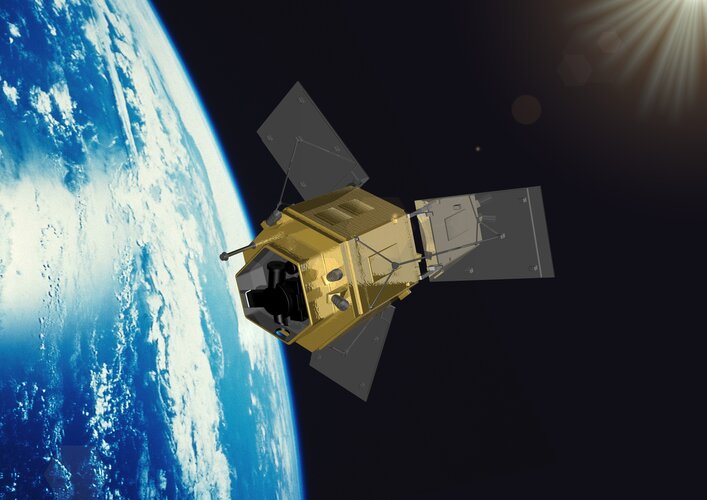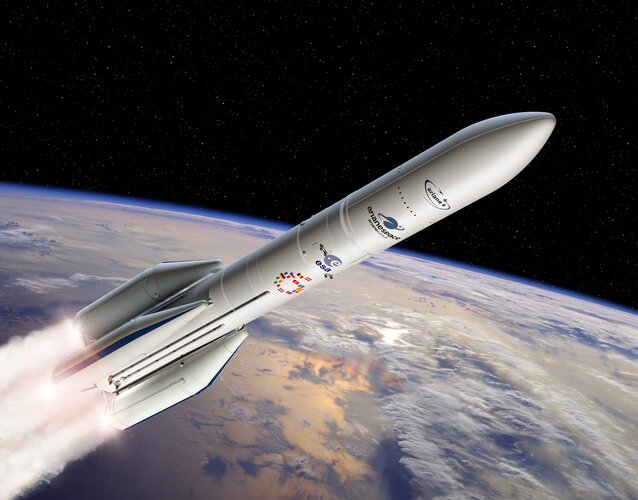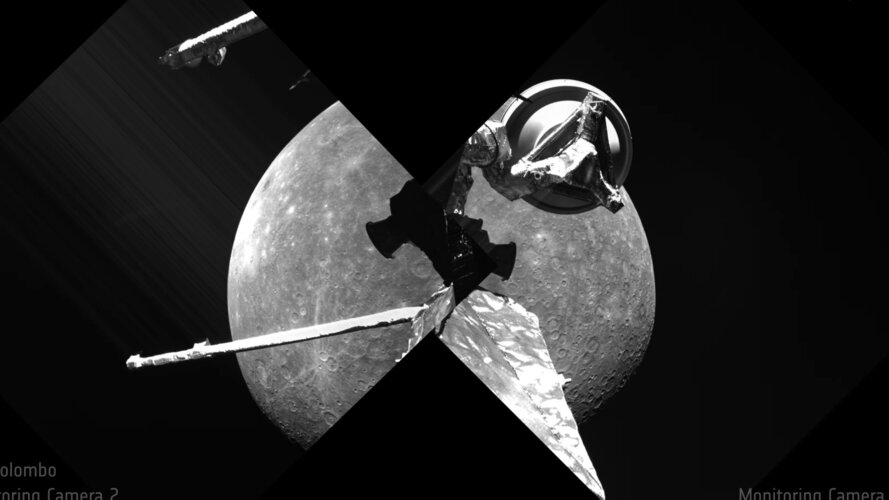
Copernical Team
NASA Experiment Suggests Need to Dig Deep for Evidence of Life on Mars
 According to a new NASA laboratory experiment, rovers may have to dig about 6.6 feet (two meters) or more under the Martian surface to find signs of ancient life because ionizing radiation from space degrades small molecules such as amino acids relatively quickly.
Amino acids can be created by life and by non-biological chemistry. However, finding certain amino acids on Mars would be consi
According to a new NASA laboratory experiment, rovers may have to dig about 6.6 feet (two meters) or more under the Martian surface to find signs of ancient life because ionizing radiation from space degrades small molecules such as amino acids relatively quickly.
Amino acids can be created by life and by non-biological chemistry. However, finding certain amino acids on Mars would be consi NASA's Curiosity takes inventory of key life ingredient on Mars
 Scientists using data from NASA's Curiosity rover measured the total organic carbon - a key component in the molecules of life - in Martian rocks for the first time. "Total organic carbon is one of several measurements [or indices] that help us understand how much material is available as feedstock for prebiotic chemistry and potentially biology," said Jennifer Stern of NASA's Goddard Space Flig
Scientists using data from NASA's Curiosity rover measured the total organic carbon - a key component in the molecules of life - in Martian rocks for the first time. "Total organic carbon is one of several measurements [or indices] that help us understand how much material is available as feedstock for prebiotic chemistry and potentially biology," said Jennifer Stern of NASA's Goddard Space Flig Northrop Grumman's Cygnus reboosts Space Station
 Northrop Grumman Corporation's (NYSE: NOC) Cygnus cargo spacecraft successfully boosted the orbit of the International Space Station (ISS). Docked to the ISS since February, Cygnus fired its main onboard engine to adjust the orbit of the station to the desired altitude to support upcoming operations. The station orbits approximately 250 miles above earth and requires a periodic reboost.
Th
Northrop Grumman Corporation's (NYSE: NOC) Cygnus cargo spacecraft successfully boosted the orbit of the International Space Station (ISS). Docked to the ISS since February, Cygnus fired its main onboard engine to adjust the orbit of the station to the desired altitude to support upcoming operations. The station orbits approximately 250 miles above earth and requires a periodic reboost.
Th Virgin Orbit on target for next launch window to open June 29
 Virgin Orbit (Nasdaq: VORB)'s launch system is in place at the Mojave Air and Space Port. The dress rehearsals are complete, and the company remains on track for its upcoming Straight Up launch, with a launch window opening on June 29 at 10 pm PDT.
The launch will support the United States Space Force's STP-S28A mission and carry payloads for the Department of Defense (DOD) Space Test Prog
Virgin Orbit (Nasdaq: VORB)'s launch system is in place at the Mojave Air and Space Port. The dress rehearsals are complete, and the company remains on track for its upcoming Straight Up launch, with a launch window opening on June 29 at 10 pm PDT.
The launch will support the United States Space Force's STP-S28A mission and carry payloads for the Department of Defense (DOD) Space Test Prog CAPSTONE Uses Gravity on Unusual, Efficient Route to the Moon
 A microwave oven-sized CubeSat dubbed CAPSTONE will blaze an untested, unusual yet efficient deep space route to the Moon that NASA is greatly interested in and future spacecraft may want to imitate.
The destination for CAPSTONE - short for the Cislunar Autonomous Positioning System Technology Operations and Navigation Experiment - is a unique lunar orbit intended for?NASA's?Gateway, a mul
A microwave oven-sized CubeSat dubbed CAPSTONE will blaze an untested, unusual yet efficient deep space route to the Moon that NASA is greatly interested in and future spacecraft may want to imitate.
The destination for CAPSTONE - short for the Cislunar Autonomous Positioning System Technology Operations and Navigation Experiment - is a unique lunar orbit intended for?NASA's?Gateway, a mul Rocketlab launches CAPSTONE on lunar mission for NASA
 Rocket Lab USA, Inc. (Nasdaq: RKLB) has launched a satellite to the Moon for NASA from Rocket Lab's Launch Complex 1 on New Zealand's Mahia Peninsula. The launch window opened at 09:50 UTC on June 28th. Designed and built by Tyvak Nano-Satellite Systems, a Terran Orbital Corporation, and owned and operated by Advanced Space on behalf of NASA, the Cislunar Autonomous Positioning System Technology Operations and Navigation Experiment (CAPSTONE) CubeSat will be the first spacecraft to test the Near Rectilinear Halo Orbit (NRHO) around the Moon.
Rocket Lab USA, Inc. (Nasdaq: RKLB) has launched a satellite to the Moon for NASA from Rocket Lab's Launch Complex 1 on New Zealand's Mahia Peninsula. The launch window opened at 09:50 UTC on June 28th. Designed and built by Tyvak Nano-Satellite Systems, a Terran Orbital Corporation, and owned and operated by Advanced Space on behalf of NASA, the Cislunar Autonomous Positioning System Technology Operations and Navigation Experiment (CAPSTONE) CubeSat will be the first spacecraft to test the Near Rectilinear Halo Orbit (NRHO) around the Moon. Contract secures design for ESA’s FORUM satellite

ESA has awarded a contract worth €160 million to Airbus in the UK to build the Earth Explorer FORUM satellite. This exciting new mission will yield unique insight into the planet’s radiation budget and how it is controlled – thereby filling in a critical missing piece of the climate jigsaw.
Short for Far-infrared Outgoing Radiation Understanding and Monitoring, FORUM is ESA’s ninth Earth Explorer mission.
Webb's NIRISS instrument is ready to see cosmos in over 2,000 infrared colors

Ariane 6 central core assembly complete

The central core of a test model of ESA’s new Ariane 6 heavy lift rocket has been assembled for the first time in the purpose-built Launcher Assembly Building at Europe’s Spaceport in French Guiana.
BepiColombo’s second Mercury flyby
 Video:
00:01:06
Video:
00:01:06
A beautiful sequence of 56 images taken by the monitoring cameras on board the ESA/JAXA BepiColombo mission as the spacecraft made its second close flyby of its destination planet Mercury on 23 June 2022.
The compilation includes images from two monitoring cameras (MCAM) onboard the Mercury Transfer Module, which provides black-and-white snapshots at 1024 x 1024 pixel resolution. The MCAMs also capture parts of the spacecraft: MCAM-2 sees the Mercury Planetary Orbiter’s medium-gain antenna and magnetometer boom, while the high-gain antenna is in the MCAM-3 field-of-view.
The image sequences lasted about 15 minutes starting soon after closest approach

